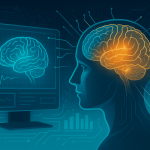
Reinforcement Learning Simulation: Safe Robot Training
Reinforcement learning simulation is revolutionizing how we train robots. This three-word key phrase describes a process where artificial intelligence learns in virtual worlds before stepping into the real one. By simulating training, robots can develop skills safely, without the risk of costly mistakes or physical damage.
In this guide, you’ll explore the fundamentals of reinforcement learning simulation, its benefits, practical applications, and future potential. You’ll also find real-world examples from leaders like OpenAI, Boston Dynamics, and Tesla, along with practical insights for professionals looking to adopt this technology.
What Is Reinforcement Learning Simulation?
Reinforcement simulation uses virtual environments to train robots and AI systems. Instead of placing a physical machine in risky real-world conditions, developers create a digital replica of the task. The robot receives rewards for correct actions and penalties for mistakes, allowing it to learn from trial and error without harm.
This approach reduces wear and tear on equipment, accelerates the learning process, and offers a cost-effective alternative to purely physical testing.
Benefits of Reinforcement Learning Simulation
The advantages of reinforcement simulation are significant for both researchers and industry practitioners:
-
Safety First – Robots can train in hazardous or complex scenarios without risking damage.
-
Cost Savings – No need for expensive prototypes or repeated hardware replacements.
-
Scalability – Multiple simulations can run simultaneously, allowing for rapid iteration.
-
Experimentation Freedom – Variables like terrain, lighting, and object placement can be changed instantly.
By running thousands or even millions of virtual trials, robots can be fine-tuned far faster than with physical testing alone.
For more on related AI applications, check the AI in robotics overview.
How Reinforcement Learning Simulation Works
The reinforcement learning simulation process typically follows these steps:
-
Create a Virtual Model – Using tools like Unity or Gazebo, engineers build realistic 3D environments.
-
Program Initial Behaviors – Robots start with basic instructions or a blank learning slate.
-
Reward-Based Training – AI algorithms reward successful actions and penalize failures.
-
Performance Refinement – Over time, the robot optimizes its behavior to maximize rewards.
-
Sim-to-Real Transfer – Learned skills are adapted to physical robots for real-world use.
To learn more about simulation tools, explore the Unity Robotics Hub..
Case Study: OpenAI and Reinforcement Learning Simulation
OpenAI’s Dactyl project demonstrates the power of reinforcement learning simulation. This robotic hand learned to solve a Rubik’s Cube entirely in a simulated environment. By running millions of virtual training iterations, OpenAI avoided mechanical wear and achieved real-world success when the robot transferred those skills to actual hardware.
For full details, visit OpenAI’s robotics research.
Case Study: Boston Dynamics and Reinforcement Learning Simulation
Boston Dynamics uses reinforcement simulation extensively for its Atlas and Spot robots. These machines train on complex terrains in simulations before attempting them physically.
For example, Atlas learned to perform flips, run, and balance on irregular surfaces in a safe virtual space before real-world testing. This process not only prevents damage but also accelerates the development of more capable robots.
Watch these feats on Boston Dynamics’ official videos.
Case Study: Tesla Optimus with Reinforcement Learning Simulation
Tesla’s humanoid robot, Optimus, trains in a reinforcement simulation environment that mimics real household and factory settings. This allows Optimus to learn tasks like folding laundry or navigating stairs without physical mishaps.
Elon Musk has emphasized that simulation drastically speeds up AI development cycles. See more at Tesla’s AI Day updates.
Challenges in Reinforcement Learning Simulation
While reinforcement simulation offers many advantages, it also has limitations. The main challenge is the “sim-to-real” gap differences between the virtual and physical world that can affect performance.
Solutions include:
-
Adding random noise to simulations to improve robustness.
-
Building higher-fidelity virtual environments.
-
Regularly validating simulation results with small-scale real-world tests.
Future of Reinforcement Learning Simulation
The future of reinforcement simulation is promising. Advancements in graphics rendering, physics engines, and AI hardware will lead to even more realistic and efficient training environments.
Possible developments include:
-
Training swarms of collaborative robots entirely in simulation.
-
Applying the method to medical robotics for surgeries.
-
Using it to perfect autonomous vehicles before road testing.
Conclusion
Reinforcement simulation is transforming how robots are trained—making the process safer, faster, and more cost-effective. From OpenAI’s puzzle-solving hand to Tesla’s humanoid helper, the technology is proving its worth across industries.
By adopting simulation-first training, organizations can accelerate innovation while minimizing risk. Whether you’re developing industrial robots, autonomous systems, or AI-driven devices, reinforcement learning simulation should be on your radar.
FAQs
What is reinforcement simulation?
It’s a process where AI systems learn in virtual worlds before operating in real environments.
Why use reinforcement simulation for robots?
It reduces costs, prevents damage, and speeds up development.
How does OpenAI apply reinforcement simulation?
They train robots like Dactyl in simulated environments to master tasks before real-world trials.
Does reinforcement learning simulation work for all robots?
Mostly, but simulation accuracy is crucial for effective transfer to real hardware.
What’s next for reinforcement simulation?
Expect more accurate simulations, expanded use cases, and integration into industries from healthcare to transportation.
Author Profile

- Online Media & PR Strategist
- Hello there! I'm Online Media & PR Strategist at NeticSpace | Passionate Journalist, Blogger, and SEO Specialist
Latest entries
 ColocationNovember 12, 2025Colocation Security Model Implementation
ColocationNovember 12, 2025Colocation Security Model Implementation Artificial InteligenceNovember 7, 2025SAP AI Strategy Enterprise Advances and Developer Tools
Artificial InteligenceNovember 7, 2025SAP AI Strategy Enterprise Advances and Developer Tools Scientific VisualizationOctober 29, 2025Federated Learning Technology in Medical Privacy AI
Scientific VisualizationOctober 29, 2025Federated Learning Technology in Medical Privacy AI Scientific VisualizationOctober 29, 2025Brain Visualization Ethics: Balancing Innovation and Privacy
Scientific VisualizationOctober 29, 2025Brain Visualization Ethics: Balancing Innovation and Privacy

